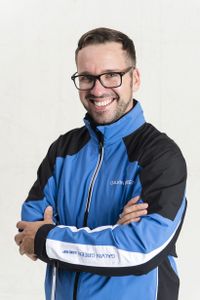How To Prevent Early Extension In Your Golf Swing
Golf Monthly Top 50 Coach Peter Finch shares his tips on how to prevent early extension in your golf swing and improve your ball-striking


Understanding how to prevent early extension in your golf swing could help you strike the ball better, and ultimately shoot lower scores.
When you are looking to generate power and consistency, maintaining your posture is incredibly important. Imagine your posture as the structure that your swing is built around, if there is something wrong with it, there will be weaknesses later on in the swing.
At its worst, this can cause a shank, but even if you aren't shanking, you'll not be striking the ball as sweetly as you can. In the video and article below, Golf Monthly Top 50 Coach Peter Finch discusses how to address this issue...

One of the most recognisable PGA professionals in the game, Peter Finch has a combined social media following of more than one million. His informative online lessons, and engaging videos help golfers across the world to improve their golf game. Peter is an expert in all areas of the golf swing and has a great track record of improving golfers of all abilities.
What is early extension in the golf swing?
Before we answer the question about how to prevent early extension in your golf swing, it makes sense to underline exactly what an 'early extension' is. This term refers to a loss of spine angle through the hitting area. As the player comes down towards impact, the hips move closer to the ball, restricting the space your hands have to move in.
When you are in the correct address position, with your hips pushed back and spine tilted over, you are looking for a relationship between the hips and the spine being maintained throughout the golf swing.
If your spine angle begins to change and starts to move back as your hips move forward during the downswing, the position of the club will change causing you to make various compensations in a short space of time as you approach impact.
How do I fix early golf swing extension?
Try this... as you take the club back, maintain your posture and keep your hips out of the way. From the top, bump your hips towards the target, trying to keep them back and out of the way. If you feel your weight moving into your left heel, that will help to ensure the hips are back and will stop them from extending early.
Subscribe to the Golf Monthly newsletter to stay up to date with all the latest tour news, equipment news, reviews, head-to-heads and buyer’s guides from our team of experienced experts.
A fantastic drill to prevent early extension uses an umbrella or an alignment stick, as demonstrated in the video. Place the alignment stick in the ground behind and to the left of your lead hip (for a right-handed golfer). Practice staying in contact with the stick as you begin the downswing, which will give you the feeling of maintaining your posture throughout the latter stages of your swing.
This is a hard thing to fix if it has become a habit, so try not to despair if it doesn't immediately translate to the course. Persevere with it, stay consistent with your practice and before long you'll start to notice you're striking the ball better.
Peter Finch's early extension checklist
1) Focus on adopting the correct address position
2) Maintain the relationship between your hips and spine angle throughout swing
3) At the top of the swing, bump your hips toward target and feel weight transfer into your left heel
4) Use alignment sticks to give instant feedback on the range
5) Practice and persevere, this is a hard one to change!

Delivering online free lessons to golfers across the globe with a combined social following of almost one million people, Peter is one of the most recognisable PGA professionals in the game.
Teaching philosophy:
I believe that golfers need to stop looking at other players and wishing they had 'that swing' and focus on trying to develop their own unique and trusted action. This comes from lessons based around enhancing their ability and understanding that perfection does not exist in golf.
Advice for practice:
Don’t just go to a driving range and beat balls thinking you will improve. If you simply use the amount of balls hit and time spent as a measure of practice, you won’t progress as quickly as you might like. True improvement comes from making your practice as realistic to the golf course as possible - uneven lies, different targets, different flights. You will almost never, ever get a flat lie in golf and yet where do most people in the UK pour their practice time? A flat range mat with the same repeated technique.
Most common problem:
A lack of attention to the club face and aim. Golfers should dedicate a large amount of practice time to gripping the club correctly and aiming it in harmony with their body.